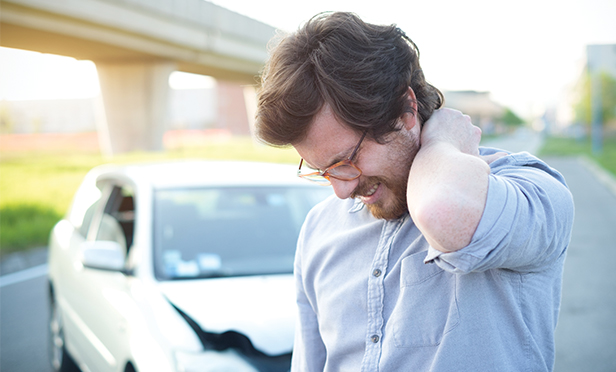Consider reviewing a claim by an individual who asserts that he or she has suffered physical injuries from being involved in a low-impact motor vehicle accident. Depending on the specific situation, the person may claim a variety of injuries.
How can anyone know if those claimed injuries could have resulted from that particular accident? This is where a biomechanical analysis can be priceless. By applying the principles of physics and engineering in evaluating the full scope of an incident, the biomechanical engineer can provide a scientific analysis of the injuries claimed by an individual. In addition, by eliminating the subjective conclusions and applying true science, this analysis can determine whether a claimed injury could have resulted from a specific motor vehicle accident.
Accident analysis
When assigned to execute a biomechanical analysis (including an analysis of the accident itself), a biomechanical engineer begins by reviewing all available information relating to the accident including, but not limited to, accident reports, medical records, vehicle photographs and repair estimates, witness testimonies, and any applicable legal documentation. If necessary, an on-site inspection of the involved vehicles and accident scene is also conducted.
“Analyzing an auto accident is like solving a puzzle,” remarked Kevin Toosi, M.D., Ph.D., president of Pittsburgh Biomechanics. “And for the analysis, you would like to have as many pieces of accident-related information as possible.”
It is important to note that before a collision, a vehicle and its occupants travel at the same speed and in the same direction with respect to the ground. When two vehicles collide, their velocities change over a very short period of time.
For instance, during a typical rear-end collision, the striking vehicle slows down and the speed of the impacted vehicle actually increases. Changes in velocity and acceleration of a vehicle during an accident substantiate the severity of the collision experienced by the occupants of the vehicle. These changes in velocity and acceleration determine movement of the occupants relative to the vehicle interior and possible forces they could experience as a result of an impact.
“In order to establish a causal relationship between an accident and claimed injuries, it’s necessary to define two critical elements – force and mechanism,” Toosi emphasized.
Accident reconstruction methods
By using the available information, along with the application of physics laws and engineering principles, an accident reconstruction can help quantify the amount of force generated by the impact. Occupant kinematics (or occupant motion) resulting from the accident are then examined to determine if the mechanism of a claimed injury was present.
When reconstructing an auto accident, many factors are considered. “So many things can occur at once in an accident,” said Toosi. For example: Did the airbag deploy or not? Were the occupants restrained? Which direction were the vehicles moving relative to each other? At what angle did the impact occur? What was the duration of impact?
It is necessary to define these variables to reach a conclusion that has the elements required for specific injuries, including certain magnitudes of force and specific mechanisms. In addition, the biomechanical engineer doesn’t work in a vacuum. He or she has access to numerous studies of real-world accidents similar to, or the same as, the one under consideration.
Real-world applications
In court, it is important for a biomechanical engineer to use similes so that jurors and judges understand the explanations of forces upon a body in a car accident in terms of everyday realities. For example, relating forces on the lumbar spine experienced in an accident to the forces experienced by an individual bending over to tie his or her shoes.
Suppose you are traveling at a low speed when the vehicle in front of you abruptly stops, causing your vehicle to rear-end the stopped vehicle. The police arrive at the scene and record all pertinent details.
Later you learn that the driver and passenger of the other vehicle are claiming soft tissue injuries to their spine, shoulders, and knee. Could those injuries have occurred from that “minor” accident? Let’s look at the incident through the eyes of the biomechanical engineer.
- Examine the details relating to the accident based on the information available. What were the speeds of the vehicles at the time of the accident? At what angle did the vehicles collide? Did the airbags deploy in either vehicle? Were safety restraints used by the vehicle occupants? What were the conditions of the road and weather at the time?
- Reconstruct the accident and determine the severity of the impact.
- Study what happened to the bodies of those involved at the time of impact. What does each party state about how the accident occurred? How did their bodies react during the collision? Did their bodies jolt forward and back? Did they strike the steering wheel, dashboard or door?
- Look at the medical records and correlate them with the claimed injuries. What injuries are being claimed? What treatment have they pursued? Do these individuals have a history of any conditions?
- Utilize all resources available. There is a myriad of literature to reference, including crash tests and research studies of the human body mechanics and tissue tolerance. Once the biomechanical engineer concludes the force applied to the individual and also the mechanism of injury, a full analysis can be provided.
So…could the claimed injuries have happened from that minor rear-end accident? The science of biomechanics can make that determination.
Author: Ded Smallwood
Source: PropertyCasualty360









